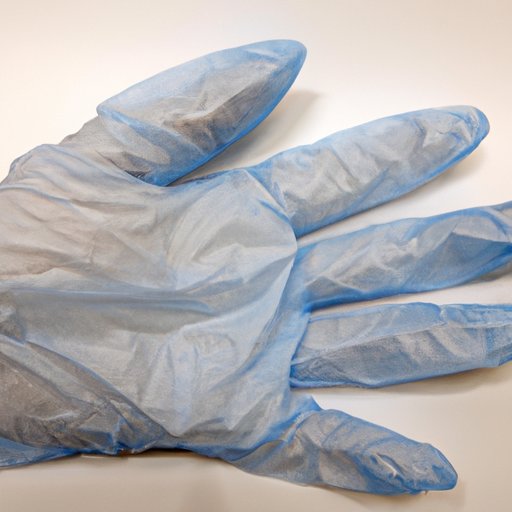
Introduction
As the world struggles to combat the COVID-19 pandemic, the importance of personal protective equipment (PPE) has never been more crucial. Gloves, in particular, serve as a vital line of defense against contamination and infection. In healthcare settings, gloves prevent the spread of harmful bacteria and viruses. In food prep, gloves help ensure food safety. In everyday life, gloves prevent skin irritation and the spread of germs. But simply wearing gloves is not enough. To get the most out of gloves, they must be changed frequently and correctly. In this article, we’ll explore why you must change single-use gloves, the best practices for changing them, the signs that it’s time to replace gloves, the risks of reusing gloves, and how to properly dispose of them.
Reasons to Change Disposable Gloves
Disposable gloves should be changed whenever there is a risk of contamination or when the gloves have become damaged. Contamination can occur from a variety of sources, such as bacteria, viruses, bodily fluids, or hazardous materials. Failure to change gloves frequently can lead to cross-contamination which can result in infections that can prove fatal, especially if the person has a weaker immune system.
For example, if a healthcare worker takes off gloves that have come into contact with a patient’s bodily fluids and then fails to change their gloves before touching a door handle, they risk spreading harmful microbes to others. Similarly, if a restaurant worker fails to change gloves between handling raw meat and cooked food, they risk cross-contaminating the cooked food with harmful bacteria.
Best Practices for Changing Single-Use Gloves
Proper glove changing techniques can help prevent cross-contamination and minimize germ transmission. The best practices for changing single-use gloves include:
1. Remove one glove carefully by pinching it at the wrist and pulling it off inside-out, so that any contaminants on the glove stay inside it.
2. With the other hand, slide two fingers underneath the cuff of the remaining glove, then carefully pull it off, turning it inside out as you do so.
3. Dispose of the gloves immediately after use.
It’s important to note that gloves should not be washed and dried but disposed of as single-use items. Also, it’s important to wash your hands, when you take the gloves off properly, and before donning the new pair, this helps ensure the wearer’s hands are free of germs and bacteria.
Signs It’s time to change gloves
To ensure maximum protection from contamination, it’s important to change gloves frequently. Worn or damaged gloves should also be replaced to avoid exposure to harmful substances. Signs that it is time to change gloves include:
1. Discoloration
2. Punctures or tears
3. Rips around the fingers
4. Soiled or contaminated gloves
If any of these signs are noted while removing the glove, the glove should be discarded immediately.
Risks of Reusing Disposable Gloves
Reusing single-use gloves is hazardous and can lead to contamination. If gloves are not changed frequently or the gloves used earlier are cleaned and reused, they may cause the spread of harmful bacteria, viruses, and germs. People who wear gloves may assume that they are protected when they are not. It is important to remember gloves are a single-use item and should be disposed of after each use.
Proper Disposal of Disposable Gloves
Disposable gloves should always be disposed of after each use. Safe disposal techniques include disposing of gloves in bins marked for hazardous waste or medical waste. In cases of handling medical waste, wash hands thoroughly after removing gloves and before donning a new pair of gloves. During the movement of gloves from wearer’s hand to disposal, and even during their disposal, it is important to take care not to touch a common surface or genitals to prevent the spread of contamination.
Keeping a Safe Glove Supply
Ensuring a fresh supply of gloves is vital to maintaining safety. To do so, make sure that you have a sufficient number of gloves on hand and store gloves in a cool, dry place.
Conclusion
Disposable gloves are an essential component of personal protective equipment. They help prevent the spread of harmful bacteria, viruses, and germs. Proper use of disposable gloves requires changing gloves frequently, using correct changing techniques, identifying the signs of contaminated or damaged gloves, avoiding reuse, and practicing safe disposal techniques after use. By following these steps, you can help ensure your safety and the safety of everyone around you.





